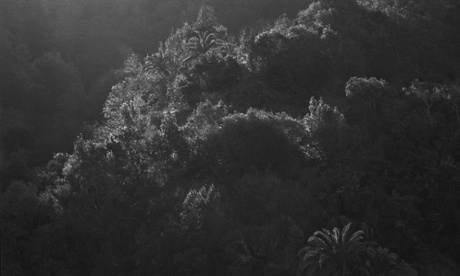
In his illuminating book of essays, The Pleasures of Good Photographs, Gerry Badger speaks of “the quiet photographer” who is unusually attentive to “the thereness of things and places”. Badger was referring to the work of Stephen Shore, who once declared photography “an exercise in attention” and “an art that calls forth intelligence, concentration and delicacy”.
These quotes came back to me when I first encountered the Dutch photographer Awoiska van der Molen’s work at a group show called Natural Order back in June.
Now comes her first photobook, Sequester, which is laden with an inordinate sense of silence. Her monochrome landscapes, made using long exposures at dusk or early morning, alert us in their meditative way not just to the thereness, but also to what James Joyce called the “whatness” of things.
Van der Molen favours out-of-the-way places – the volcanic landscapes of the smaller Canary Islands loom large in her book. She spent long periods of time there alone, honing not just her craft but the sense of isolation needed to “gain access to the stoic nature of the landscape”, as she so memorably puts it.
Here is a photographer that is infinitely patient, and interested in the stubborn core of things. Her images are captured in single exposures of up to half an hour, then painstakingly printed in her darkroom on large format, silver gelatin paper. The methodology is unapologetically old-fashioned, and the results extraordinary powerful.
In one of my favourite shots, a black mountaintop looms out of the slate-grey darkness, two wavy white lines flowing from the peak like moonlit streams. Astonishingly, these are light trails made by two groups of nocturnal hikers, which she managed to capture from a distance thanks to long exposure. You do not need to know this to appreciate its haunting beauty, but it alerts us to the delicacy of her transformative art.
Elsewhere, the flowery braces of tall trees or a mass of feathery fronds emerge from a darkness that is deep spatially and atmospherically. You can almost hear the rustle of the mountain breeze. You often feel you could be looking at a different planet: volcanic rock seems lunar; cliffs give way to ominously dark voids that could be the edge of the world; surfaces look alien with their odd shadows and crevices. In one startling shot, a huge peak rises out of a barren plain, with a single line of grey – a walking track, perhaps – traced as if by hand over its brow.
The book is beautiful, but it is worth trying to see her work in a gallery, where the detail of the silver gelatin prints adds to the palpable sense of emptiness and isolation. She has just won the grand prize of the Japanese Hariban award, which allows her to travel to Kyoto to study colloidal printing with the master craftsmen of the Benrido Collotype Atelier.
One senses that, for Van der Molen, photography is like a metaphysical quest, a journey to the essence of things. Her images take me back to Nan Shepherd’s classic book The Living Mountain, which recounts, in luminous prose, the Scottish writer’s lifelong fascination with the Cairngorms as a physical and spiritual landscape. In it, she writes of her solitary walking and looking: “It is a journey into Being: for as I penetrate more deeply into the mountain’s life, I penetrate also into my own. For an hour I am beyond desire ... I am not out of myself, but in myself. I am. To know Being, that is the final grace accorded from the mountain.” That grace exists, too, in these quiet photographs of a world both desolate and beautiful.

